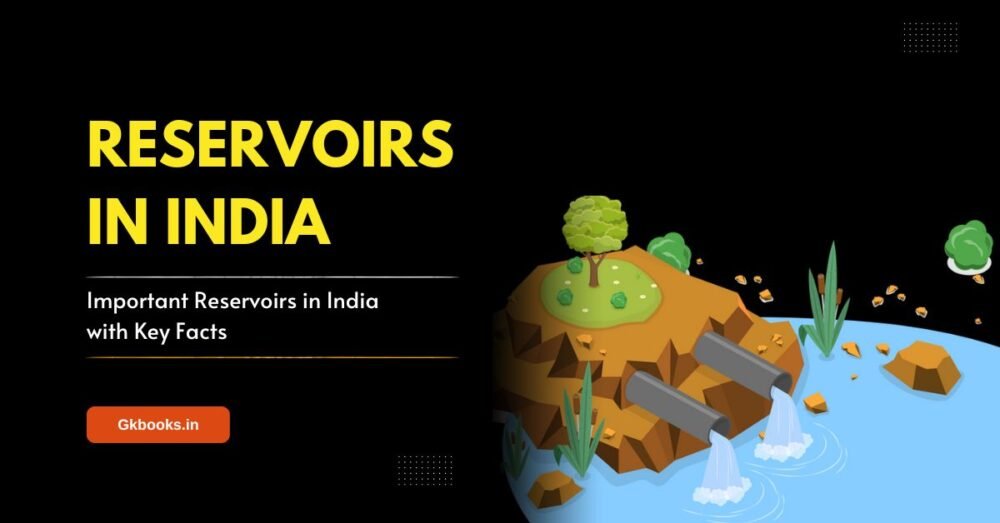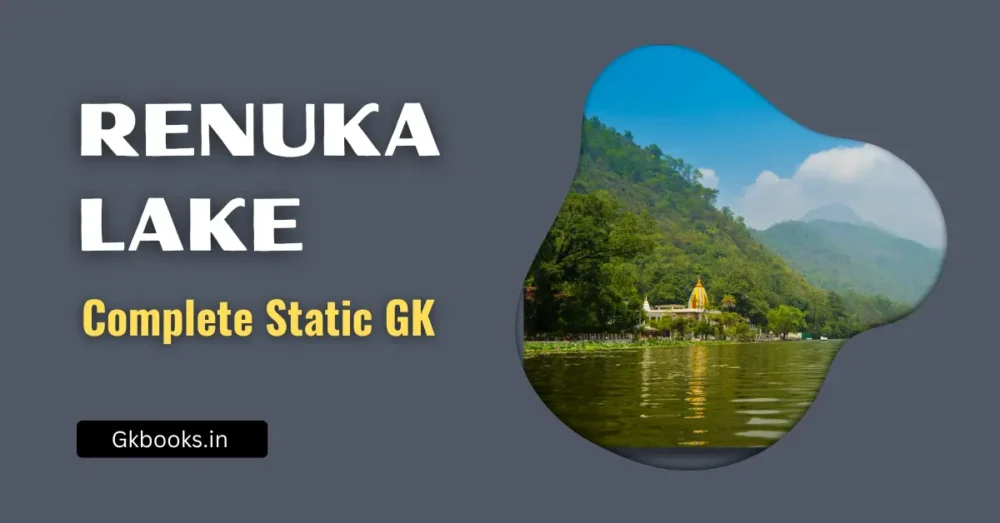Surajkund Lake, a historic reservoir in Haryana, India, is renowned for its ancient origins and architectural significance. Built in the 10th century by King Surajpal of the Tomar dynasty, it reflects India’s rich heritage. Today, it is famous for the annual Surajkund International Crafts Mela, attracting tourists and artisans worldwide.
For aspirants preparing for competitive exams, understanding the history, facts, and significance of Surajkund Lake can boost your GK and help you tackle related questions with confidence. Let’s explore the key details!
🎯 One-Stop Resources on Indian Lakes – Click here for all essential topics.
✅ Explore the Complete List of Indian Geography Topics
Surajkund Lake in a Nutshell
| Feature | Details |
|---|---|
| Location | Faridabad, Haryana. |
| Built By | King Surajpal of the Tomara Rajput dynasty |
| ‘Surajkund’ means | Lake of the Sun |
| Structure | Artificial Kund with a semicircular amphitheater-shaped embankment |
| Sun Temple | A Sun temple was constructed on the western bank |
| Nearby Historical Places | Badkhal Lake, Anangpur Dam, Damdama Lake, Tughlaqabad Fort, Adilabad ruins, Chhatarpur Temple |
| Nearby Natural Attractions | Mangar Bani, Asola Bhatti Wildlife Sanctuary, seasonal waterfalls in Pali-Dhuaj-Kot villages |
| Key Event | Surajkund International Craft Mela |
◾ Don’t Miss: Major Lakes in India Complete Notes
Surajkund Lake: Key Highlights
- Surajkund is an ancient reservoir located on the Southern Delhi Ridge of the Aravalli Range in Faridabad, Haryana, about 8 km from South Delhi.
- The name “Surajkund” means “Lake of the Sun”, and it was built in a shape resembling an amphitheater with a semi-circular embankment.
- It is believed to have been constructed in the 10th century by King Surajpal of the Tomara Rajput dynasty. King Surajpal, a sun worshipper, also built a Sun temple on the western bank of the lake.
- Surajkund is famous for its annual fair called the Surajkund International Craft Mela, which attracts over 1.2 million visitors, including 160,000 foreigners, with participation from more than 20 countries.
- Surrounding Surajkund, there are 43 paleolithic sites, dating back to 100,000 BC, with rock art and stone tools.
- The area is part of the Northern Aravalli leopard wildlife corridor, stretching from Sariska Tiger Reserve to Delhi.
- Important historical sites near Surajkund include Badkhal Lake, Anangpur Dam, Damdama Lake, Tughlaqabad Fort, Adilabad ruins, and Chhatarpur Temple in Delhi.
- Surajkund is close to the Asola Bhatti Wildlife Sanctuary and several seasonal waterfalls in the Pali-Dhuaj-Kot villages of Faridabad.
- There are numerous lakes formed from abandoned open-pit mines around the area.
- Surajkund is also located within the leopard habitat.
- Another ‘Surajkund’ once existed in Sunam, Punjab, but was destroyed by invaders like Mahmood Ghaznvi and Taimur Lane, leaving it in ruins.
◾ Don’t Miss: Artificial Lakes in India: Exam-Ready Notes
History of Surajkund
Paleolithic Era (100,000 BP)
- Stone tools (microliths) from the Paleolithic era were found near Surajkund and Anangpur Dam.
- Tools and rock art were discovered at 43 sites along the Anangpur-Surajkund-Tughlaqabad axis.
- The area’s hilly terrain was ideal for prehistoric settlements.
Tomara Dynasty (8th–11th Century CE)
- Founded by Anangpal I, the first ruler of the Tomar dynasty.
- The dynasty’s first capital was Anangpur, later moved to Dhillikapuri (Delhi).
- Surajkund was possibly built in 686 CE by King Surajpal, son of Anangpal I.
- A Sun Temple once existed on the lake’s eastern side; ruins and carved stones have been found.
- The lake is believed to be named after the king or the temple.
Chauhan Dynasty (12th Century CE)
- The Tomars were overthrown by the Chahamanas (Chauhan dynasty), led by Prithviraj Chauhan.
- Lal Kot (built by the Tomars) was renamed Qila Rai Pithora by Prithviraj.
Tughlaq Dynasty (1351–1388 CE)
- Feroz Shah Tughlaq renovated the lake, adding steps and terraces with lime mortar.
- A cave-like structure (garhi) was built near the Sun Temple ruins.
Modern Era (Post-1947)
- The annual “Surajkund Crafts Mela” was introduced, turning the area into a popular cultural hub.
- After its independence, the Haryana Government developed Surajkund as a tourist destination.
◾ Don’t Miss: Complete Guide to Wular Lake: India’s Largest Freshwater Lake
Architecture of Surajkund
Shape and Structure
- The reservoir is designed in the shape of a rising sun with an eastward arc.
- It is surrounded by a steep, semi-circular embankment made of stepped stones.
Function and Size
- The reservoir has a diameter of 130 meters (427 feet) and covers an area of 40 hectares (99 acres).
- It was created to meet water shortages in Delhi, especially by intercepting rainfall.
- In the past, it served as a hunting forest resort and is home to dancing peacocks.
- The reservoir is filled during the monsoon season and remains dry during the summer months.
- Repairs:
- Major repairs were carried out during the 1920s under British rule.
Related Structures
Anagpur Dam
- Built in the 8th century, located 2 kilometers (1.2 miles) upstream from Surajkund.
- A seasonal stream flows from the dam to Surajkund.
Peacock Lake
- Located downstream and southwest of Surajkund, is known for its beautiful surroundings.
38th Surajkund International Crafts Mela-2025
- Event Dates: 7th to 23rd February 2025.
- Location: Surajkund, Faridabad, Haryana, India.
- Significance: The largest crafts fair in the world, showcasing India’s richness and diversity in handicrafts, handlooms, and cultural traditions.
- Organizers: Hosted by the Surajkund Mela Authority & Haryana Tourism, with collaboration from the Union Ministries of Tourism, Textiles, Culture, and External Affairs.
Concerns and Conservation
Ban on illegal mining
- The decision is aimed at ensuring the long-term protection of natural resources and promoting ecological balance in the area.
- The Supreme Court of India has ordered the halt of illegal mining around Surajkund.
- Illegal mining had been causing severe ecological damage and rapid depletion of groundwater in the Aravalli hill range, stretching between Tughlaqabad and Gurugram via Surajkund.
- The Haryana Government has been directed to stop all mining activities and the pumping of groundwater within a 5 km radius from the Delhi-Haryana border in the Haryana Ridge and Aravalli hills.
Damage to the catchment area
- The Anangpur Dam was originally built by Samrat Anangpal Tomar to store water for the surrounding areas.
- Water storage in Anangpur Dam, Surajkund, and Peacock Lake has been severely impacted due to mining activities.
- The catchment area, which supplies water to Surajkund, includes villages like Anangpur, Lakkarpur, Ankhir, and Meola Maharajpur.
- Extensive mining and large habitations in these areas have disrupted the drainage system.
- This disturbance has blocked the gravity flow of rainwater into the reservoir, affecting the water flow to Surajkund Lake.
- The damage has also harmed the flora and fauna of the region, threatening the local ecosystem.
- Surajkund Lake’s drainage basin is part of the Aravalli hill range, and is fed by a local stream (nullah) from the north-western side that also supplies water to the Anangpur Dam.
Surajkund’s Impact on Leopard Habitat
- The absence of wildlife crossings, such as underpasses or overpasses, increases the risk of accidents for these animals.
- Surajkund lies within the leopard habitat shared by Delhi and Haryana.
- Leopards in the area are often killed due to vehicle collisions on the Gurugram-Faridabad Road.
Wetland rehabilitation
- Asola Bhatti Wildlife Sanctuary is located near Surajkund.
- Mine pits in the area have been transformed into wetland habitats.
- This transformation is helping to improve the groundwater levels in the region.
Protected status
- Ashok Khemka, the head of HAD, announced on 31 July 2021 that the area would undergo an extensive survey.
- The survey will cover the South Ridge of the Aravali in Delhi and Haryana between Gurugram and Faridabad, mapping and GPS tagging each site.
- Large-scale scientific excavations and dating of paintings and excavated sediments will be conducted.
- The Haryana Archaeological Department (HAD) has proposed to declare the area as a protected archaeological site.
- HAD is awaiting the gazette notification from the Government of Haryana (GoH).
FAQs
Surajkund Lake is located in the state of Haryana, India.
Surajkund Lake was built by King Surajpal of the Tomara Rajput dynasty in the 10th century.
The annual Surajkund Craft Fair is held in the state of Haryana, India.





